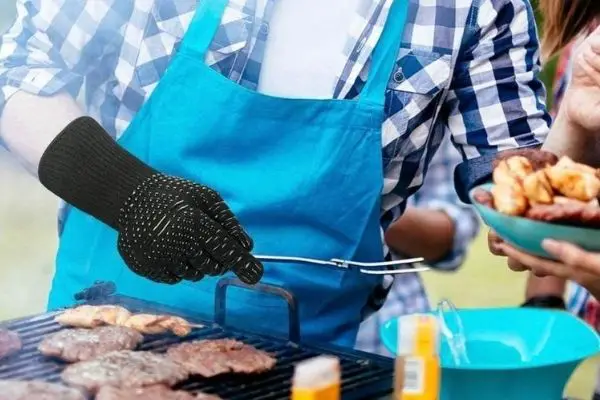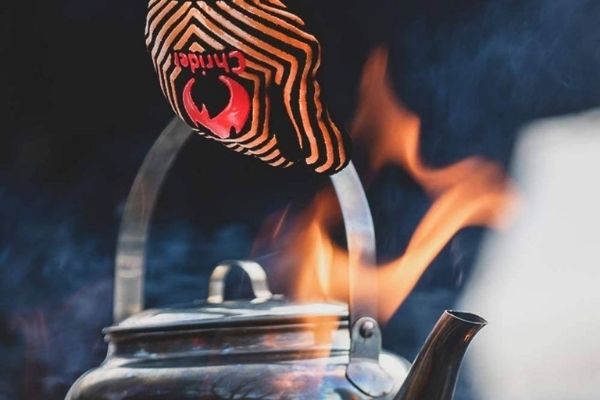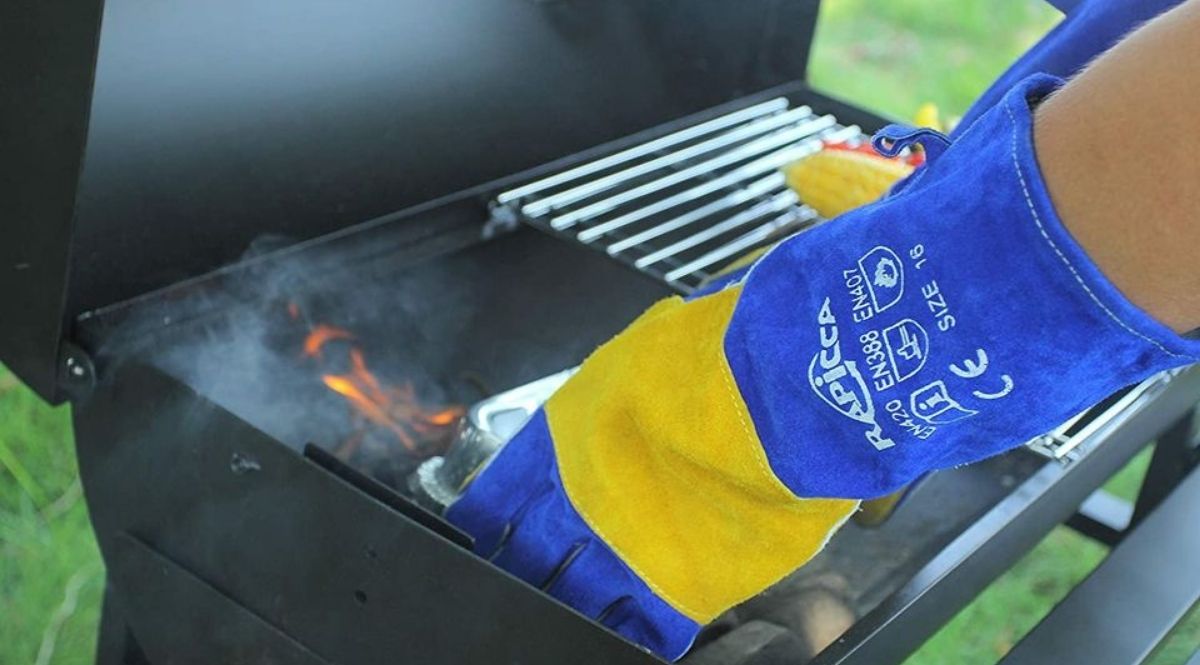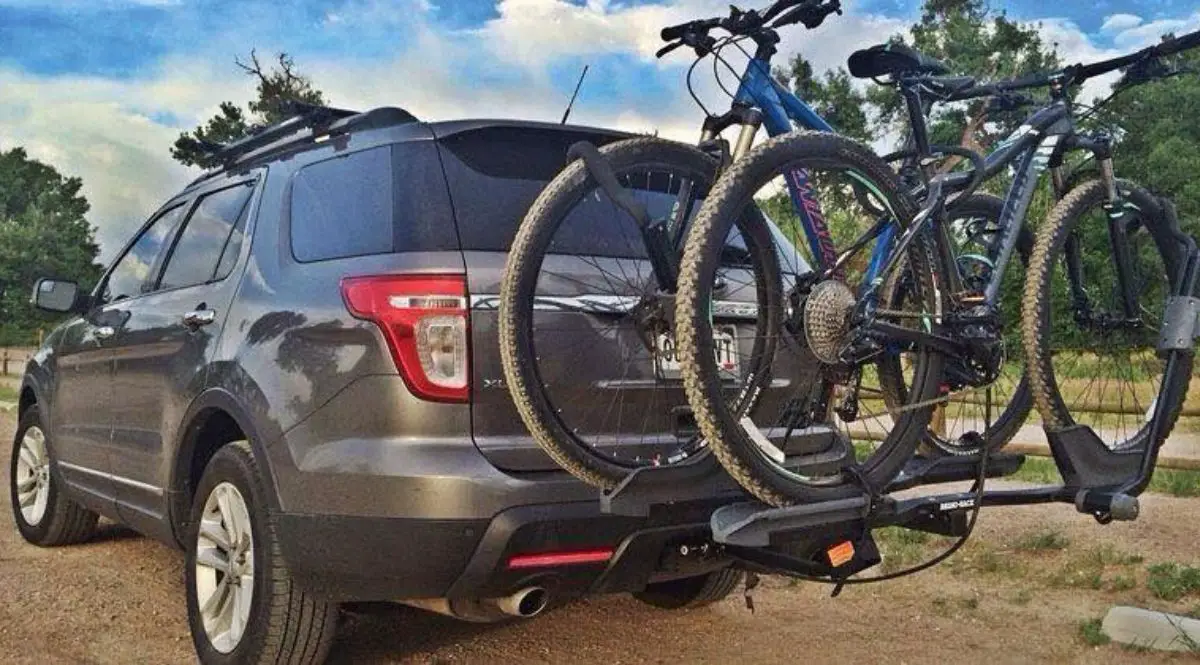Cooking over a campfire is one of the most enjoyable ways to make a meal and for many is the most enjoyable part of any RV trip. Cooking over an open fire has its hazards and to maximize safety there are some special tools you may want to consider before getting that campfire roaring.

One key piece of safety equipment you’ll want to consider is heat-resistant gloves. Are they required for campfire cooking? No, if you are extremely careful you can get away without them. However, there are many great reasons you should add them to your campfire cooking toolkit.
The biggest reason for having heat-resistant gloves is safety. When cooking over a campfire, there is a lot of heat in a campfire and precisely controlling where that heat goes can be difficult. Any cooking equipment that you use will likely get hot and heat-resistant gloves will prevent burns as you work with your different tools.
It’s never pleasant to grab something you expect to be cool, only to find out it was closer to the fire and much hotter than you thought. Also, having gloves handy takes some of the fear out of working around the fire. This allows you to work with a clearer mind and to concentrate on the task at hand: making great food.
Here we’ll take a look at some things you may want to consider when choosing the best heat-resistant gloves for your next campfire cooking adventure.
Aren’t All Leather Gloves The Same?
No, all leather gloves are not the same. Heat-resistant leather gloves are made up of several layers of thicker leather. Multiple layers provide small air gaps between the layers and add thickness. Both of which add to the glove’s overall ability to prevent heat from transferring to your skin.

The stitching on heat-resistant gloves also tends to be heavier, providing tighter joints that don’t allow heat to pass through. Finally, heat-resistant leather gloves designed for BBQ or campfire cooking will have long cuffs designed to extend the glove’s thermal protection will down your forearm.
These design features make heat-resistant leather gloves much better at providing protection from temperatures in excess of 900 degrees Fahrenheit than standard leather gloves. They also retain enough dexterity to allow you to work your campfire kitchen while wearing them.
How To Choose The Right Heat Resistant Gloves?
In order to choose the right heat-resistant gloves, you’ll need to consider how you’ll use them. If your cooking style or setup requires fine dexterity then you’ll want to choose gloves that are thinner and more flexible. These are usually synthetic gloves like silicone. If you don’t usually do fine manipulations with your food or equipment then bulkier, less flexible gloves like the heavier leather gloves will work fine.
Regardless of the type you choose, always look for a quality brand with a solid reputation. Many of us shop mainly on Amazon or similar online retailers these days. Carefully read through the reviews looking for feedback on how well a particular set of gloves protects from heat, how durable they are in the long term, how much they impede hand motion and overall evaluations of quality. Choose the ones that best suit your needs.
What Is The Right Length Of Heat Resistant Gloves Are Best?
For most cooking campfires, gloves that cover your hands and up to ½ of your forearm should be sufficient. Longer gloves are OK too but are generally not necessary. While campfires can produce intense heat because they are outdoors that heat usually trails off pretty quickly the farther you get from the fire. Also, when cooking over a campfire you want to keep the fire just large enough to meet your cooking needs without going overboard.
What Is The Best Material For Heat Resistant Gloves?
The best material for heat-resistant gloves is the one that allows you to work the way you prefer to work while offering the necessary protection from heat to keep you safe and comfortable. There are three primary materials used and each has its advantages and disadvantages. Let’s take a look at each of those and see where their strength and weaknesses lay.
Polyester gloves: Polyester is a synthetic material that is commonly used in terry cloth, the most common fabric for oven mitts. While it can provide protection from indirect heat up to 490 degrees Fahrenheit, it will become flammable if exposed to direct heat or flames over 500 degrees Fahrenheit. For this reason, polyester or polyester blends should be avoided for campfire cooking.
Silicone gloves: Silicone gloves are considered a medium heat resistant material which has several pros.
- They provide higher heat resistance than leather
- The material is more flexible than leather
- The higher heat resistance and greater flexibility allow providing for greater finger dexterity
- Silicone is a slip-resistant material
On the downside:
- Silicone can trigger allergies so not everyone can use them.
Leather gloves: Leather gloves are considered a low heat resistant material which is great for several reasons.
- They have been providing proven protection from heat for years.
- There are a large number of great suppliers of quality leather heat-resistant gloves on the market which are available in a broad range of styles and colors.
- They can provide protection to temperatures over 900 degrees Fahrenheit, direct contact to 390 degrees Fahrenheit
- They are an all-natural product, hypoallergenic and biodegradable
- They can easily last a lifetime when properly cared for
- They are exceptionally resistant to tears and punctures.
- They will not catch on fire when exposed to overheating conditions.
On the downside:
- They tend to be bulky and rigid, especially when new
- They may need break-in time to get the most out of them
- They can limit your dexterity, making working with things that need fine manipulation difficult
- They can be expensive
- They will degrade in extreme heat. Exceeding their maximum temperature will cause the leather to shrink and smoke, resulting in permanent damage. This can destroy their ability to provide protection in future uses.
What Are The Options For Heat Resistant Gloves?
There are three primary options for heat-resistant gloves. Low heat-resistant materials include cotton twill and leather. These will provide good heat protection for radiant heat but are not good for direct contact with fire or very hot items greater than around 500 degrees Fahrenheit.
Silicone gloves are a second-tier solution that provides better protection and greater resistance to higher temperatures. This is why the vast majority of BBQ gloves are made with silicone. On the downside, you can’t use them if you have a silicone allergy.
The third option is a high-end synthetic glove made from Kevlar or similar fabric. These have the highest heat resistance, but will also be gross overkill and prohibitively expensive for campfire applications.





